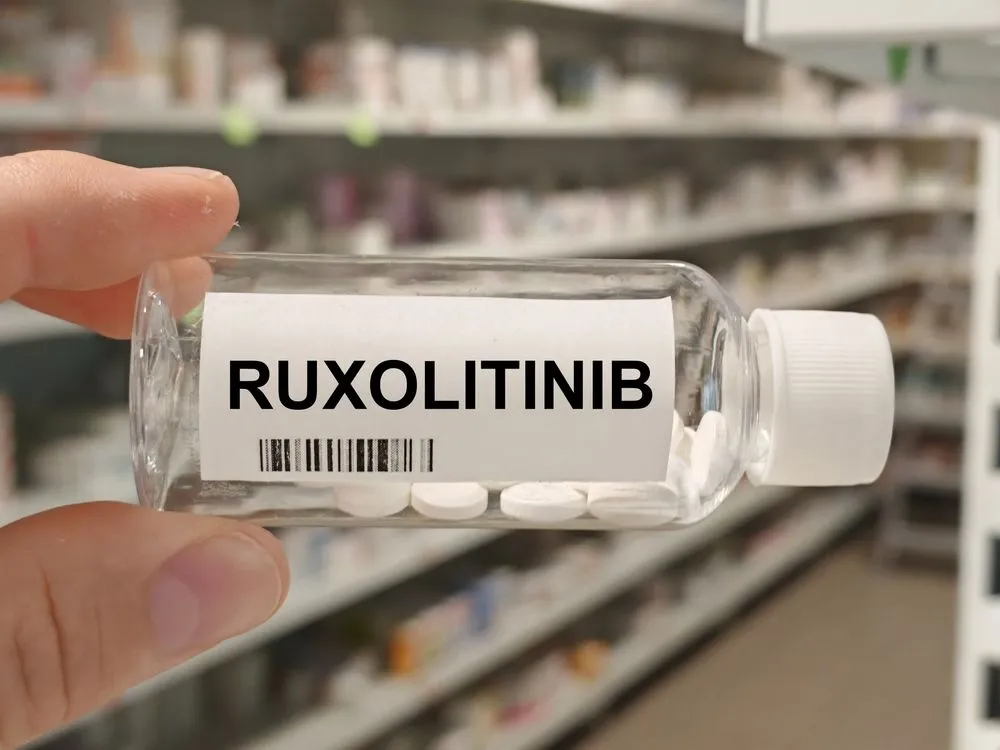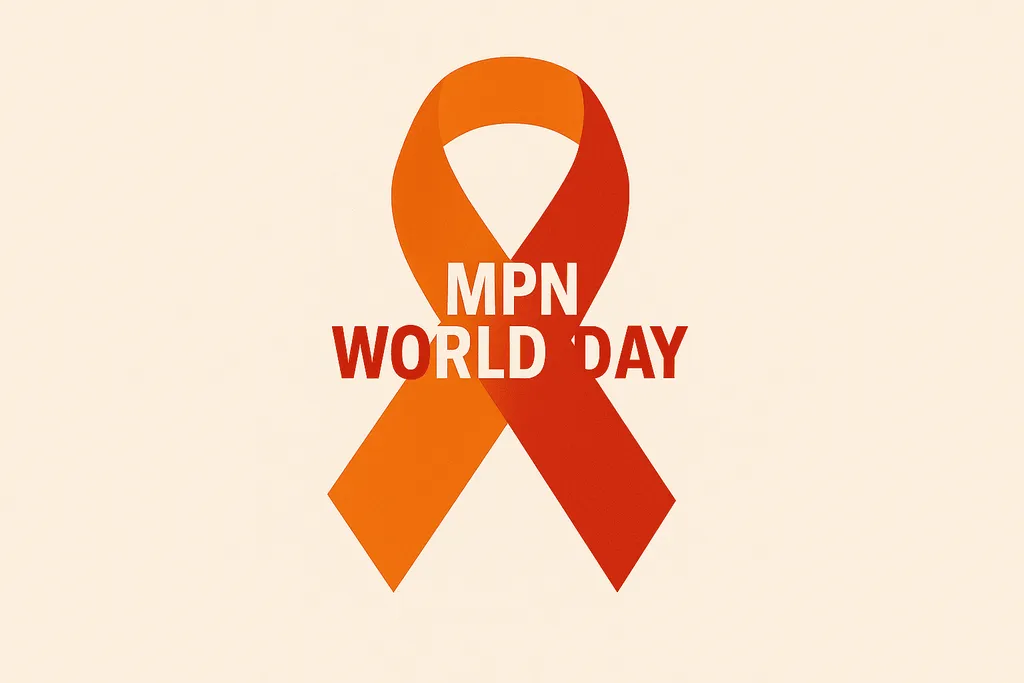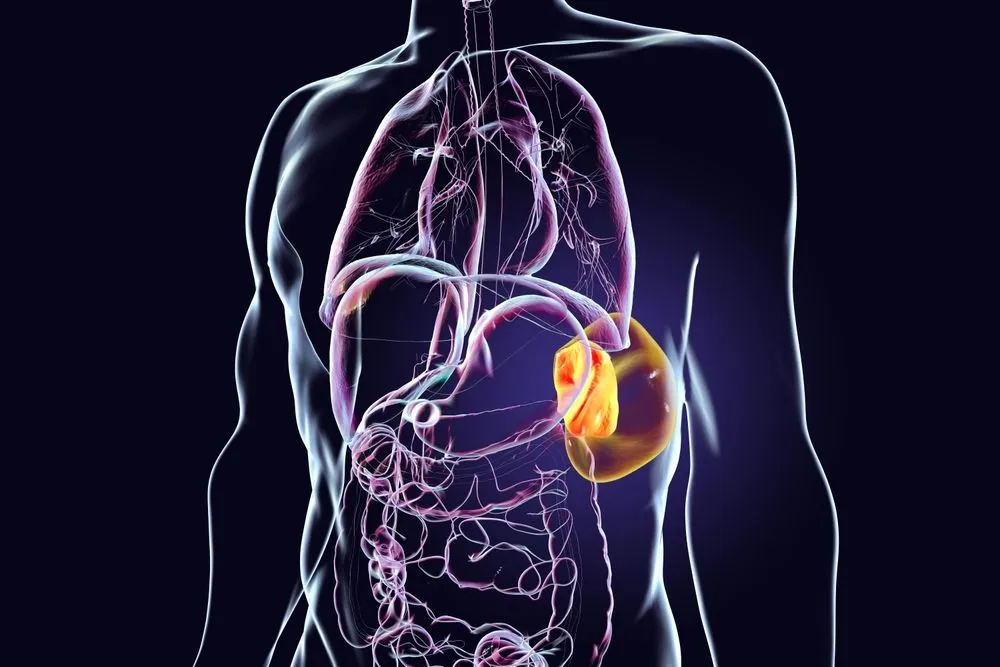What is the Relationship Between Vitamin D and Myelofibrosis?

A Japanese study evaluated the complex relationship between vitamin D and myelofibrosis. Read about the study’s findings below!
What is Vitamin D?
Vitamin D is a fat-soluble vitamin that helps the body absorb calcium from the diet, helping build and maintain strong bones. Additionally, vitamin D plays a role in regulating immune responses and reducing inflammation.
Vitamin D is obtained primarily through sunlight exposure, which triggers its creation in the skin. As we age, the skin decreases its ability to create vitamin D from sunlight exposure.
Another way to get vitamin D is by consuming foods rich in the vitamin, such as fatty fish (salmon, sardines, or bluefin tuna), fortified dairy products, and egg yolks. Vitamin D supplements are also widely available for those who may not get sufficient amounts from sunlight or diet.
The amount of vitamin D a person needs each day varies by age. People aged 1-70 need 600 International Units (IU) per day, and those aged 71 and older need 800 IU per day.
Getting too much vitamin D can lead to vitamin D toxicity, which can cause hypercalcemia, a condition characterized by an abnormally high level of calcium in the blood. This excess calcium can result in nausea, weakness, and kidney problems, including kidney stones. Over time, severe hypercalcemia from vitamin D toxicity can also damage the heart and bones, leading to more serious health issues. Unless advised by a medical professional, consuming more than the recommended vitamin D guidelines is not advised to prevent these health conditions.
How Does Vitamin D Impact Myelofibrosis?
In 2019, Dr. Kanako Wakahash, a Japanese researcher from Kobe University, evaluated the relationship between vitamin D and myelofibrosis in mice.
Dr. Wakahashi found that vitamin D signaling caused stem cells, which are capable of forming other blood cells, to change into macrophages. This, in turn, stimulated osteoblasts (young cells that form bone) to harden the bone. In cells that contain genetic mutations like JAK2V61F, this stimulation causes marrow fibrosis, the thickening and scarring of bone marrow tissue, which disrupts normal blood cell production seen in myelofibrosis.
The researchers gave the mice with myelofibrosis a diet low in vitamin D, blocked the vitamin D receptor signal, and removed macrophages from the bone marrow. This proved to prevent the further development of bone marrow fibrosis.
Other studies prior to Dr. Wakahashi’s show a less clear relationship between vitamin D and myelofibrosis. One study in 2011 found that vitamin D deficiency did not have a significant impact on myelofibrosis patients’ length of life. Another study presented rare cases of children who had a severe vitamin D deficiency developed rickets and myelofibrosis. The rickets and myelofibrosis improved after treating these children with vitamin D supplementation.
In conclusion, further research surrounding the role of diet and supplements in the development and control of diseases may help find what we eat can help improve not only cancer incidence but also the treatment and delay progression.
- Another article you may be interested in related to myelofibrosis and nutrition: What to Eat if You Have Myelofibrosis
Join the HealthTree for Myelofibrosis Newsletter to Learn More!
JOIN THE HEALTHTREE FOR MYELOFIBROSIS NEWSLETTER
Sources:
- Vitamin D
- Nutrition Needs for Older Adults: Vitamin D
- Vitamin D receptor–mediated skewed differentiation of macrophages initiates myelofibrosis and subsequent osteosclerosis
- Reversible myelofibrosis due to severe Vitamin D deficiency rickets
- Vitamin D insufficiency in myeloproliferative neoplasms and myelodysplastic syndromes: Clinical correlates and prognostic studies
A Japanese study evaluated the complex relationship between vitamin D and myelofibrosis. Read about the study’s findings below!
What is Vitamin D?
Vitamin D is a fat-soluble vitamin that helps the body absorb calcium from the diet, helping build and maintain strong bones. Additionally, vitamin D plays a role in regulating immune responses and reducing inflammation.
Vitamin D is obtained primarily through sunlight exposure, which triggers its creation in the skin. As we age, the skin decreases its ability to create vitamin D from sunlight exposure.
Another way to get vitamin D is by consuming foods rich in the vitamin, such as fatty fish (salmon, sardines, or bluefin tuna), fortified dairy products, and egg yolks. Vitamin D supplements are also widely available for those who may not get sufficient amounts from sunlight or diet.
The amount of vitamin D a person needs each day varies by age. People aged 1-70 need 600 International Units (IU) per day, and those aged 71 and older need 800 IU per day.
Getting too much vitamin D can lead to vitamin D toxicity, which can cause hypercalcemia, a condition characterized by an abnormally high level of calcium in the blood. This excess calcium can result in nausea, weakness, and kidney problems, including kidney stones. Over time, severe hypercalcemia from vitamin D toxicity can also damage the heart and bones, leading to more serious health issues. Unless advised by a medical professional, consuming more than the recommended vitamin D guidelines is not advised to prevent these health conditions.
How Does Vitamin D Impact Myelofibrosis?
In 2019, Dr. Kanako Wakahash, a Japanese researcher from Kobe University, evaluated the relationship between vitamin D and myelofibrosis in mice.
Dr. Wakahashi found that vitamin D signaling caused stem cells, which are capable of forming other blood cells, to change into macrophages. This, in turn, stimulated osteoblasts (young cells that form bone) to harden the bone. In cells that contain genetic mutations like JAK2V61F, this stimulation causes marrow fibrosis, the thickening and scarring of bone marrow tissue, which disrupts normal blood cell production seen in myelofibrosis.
The researchers gave the mice with myelofibrosis a diet low in vitamin D, blocked the vitamin D receptor signal, and removed macrophages from the bone marrow. This proved to prevent the further development of bone marrow fibrosis.
Other studies prior to Dr. Wakahashi’s show a less clear relationship between vitamin D and myelofibrosis. One study in 2011 found that vitamin D deficiency did not have a significant impact on myelofibrosis patients’ length of life. Another study presented rare cases of children who had a severe vitamin D deficiency developed rickets and myelofibrosis. The rickets and myelofibrosis improved after treating these children with vitamin D supplementation.
In conclusion, further research surrounding the role of diet and supplements in the development and control of diseases may help find what we eat can help improve not only cancer incidence but also the treatment and delay progression.
- Another article you may be interested in related to myelofibrosis and nutrition: What to Eat if You Have Myelofibrosis
Join the HealthTree for Myelofibrosis Newsletter to Learn More!
JOIN THE HEALTHTREE FOR MYELOFIBROSIS NEWSLETTER
Sources:
- Vitamin D
- Nutrition Needs for Older Adults: Vitamin D
- Vitamin D receptor–mediated skewed differentiation of macrophages initiates myelofibrosis and subsequent osteosclerosis
- Reversible myelofibrosis due to severe Vitamin D deficiency rickets
- Vitamin D insufficiency in myeloproliferative neoplasms and myelodysplastic syndromes: Clinical correlates and prognostic studies

about the author
Megan Heaps
Megan joined HealthTree in 2022. She enjoys helping patients and their care partners understand the various aspects of the cancer. This understanding enables them to better advocate for themselves and improve their treatment outcomes.
More on Navigating Your Health
Trending Articles
Get the Latest Myelofibrosis Updates, Delivered to You.
By subscribing to the HealthTree newsletter, you'll receive the latest research, treatment updates, and expert insights to help you navigate your health.
Together we care.
Together we cure.
3x Faster.









